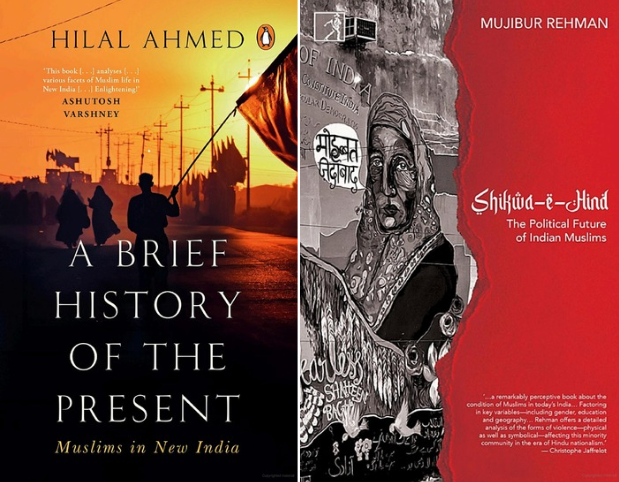By Uzma Ausaf
Since 2014, almost every other month, a book is released on Prime Minister Narendra Modi. There have been a number of biographies on Modi which have tried to present a positive image of Modi but even tried to show him as a superhero. There was a book by a journalist who later became a spokesperson of the BJP in Delhi which claimed that as a young boy Modi had defeated a crocodile in a physical fight. Many other books projected him as a saint, who retired to the Himalayas for four years. And some six years ago, Modi himself gave tips to students in the form of a book called Exam Warriors.
However, even as these books hit the market with a great regularity, nobody dared to write about the cruelties which were meted out to Muslims since the time Narendra Modi became the prime minister of India. Even constant lynching of Muslim men by Gaurakshaks did not get due attention from the literary fraternity. Similarly, no media house, publisher or any author wrote about the attacks on Masjids, Madrasas or even bulldozing Muslim houses. However, the June 2024 results of general election may prove to be the turning point in the coverage of Muslim problems by some publishers. People feel less intimidated and are feeling confident to express their thoughts now.
Over the last few weeks, books by respected academics and researchers like Hilal Ahmed and Mujibur Rehman have hit the market. Some people have called the authors brave for daring to write on such a subject at such a time. Hilal’s book, A Brief History of the Present: Muslims in New India is published by Penguin. Many believe that it is a sequel to his important book Siyasi Muslim. In this book Hilal talks of the many problems faced by Muslims since Modi came to power. He talks of the politics of Hindutva, Muslimness and the frequent anti-Muslim violence in the country.
Hilal also draws attention to islamophobia and the frequent attacks on the Muslim identity like the attacks on hijab and mosques. He has also tried to talk of caste system prevalent among the Muslim community in India and highlight the ‘Pasmanda’ initiative of Modi.
The book comes from rich praise from Ashutosh Varshney who said, “The book analyses various facets of Muslim life in New India.” He goes on to call the book “Enlightening!”
Hilal is associate professor at Centre for the Study of Developing Societies (CSDS) New Delhi. He works on political Islam, Indian democracy and politics of symbols in South Asia. He is associated with the Lokniti programme at the CSDS.
Earlier this month, on August 6, we had a packed house at India Islamic Cultural Centre for the launch of Mujibur Rehman’s Shikwa-e-Hind: The Political Future of Indian Muslims. It was followed by well-attended discussion at Jamia Millia Islamia on August 22.
Incidentally, Professor Mujibur Rahman teaches at Jamia Millia Islamia and specializes in identity politics with a focus on religious minorities. His is a rare book which throws light on the cultural and political lives of south Indian Muslims. South Indians are different from their North Indian counterparts. Here Islam spread through traders and their interaction with Indian kings of the coastline. That is why Muslims there often know Arabic and follow the Shafai school of thought much like the people in West Asia. They have been witnessed to a social revolution of sorts due to the prevalent Dravidian movement.
The Welfare Party of India has been trying to establish itself in the hearts of Kerala Muslims where the Indian Union Muslim League has been a formidable party. This IUML is different from the earlier Muslim League which had come up in 1906. Similarly, in Telangana Asaduddin Owaisi’s All India Majlis-e-Ittehadul Muslimeen is a force to reckon with. In North India, there is no Muslim party worth the name.
Unlike North India, South India has not been witnessed to lynching. In North India, however, as Mujibur Rehman writes in his book, there have been cases of lynching since 2015. In North India there is a greater communal feeling due to the Partition in 1947. Mujibur Rehman’s book highlights lynching cases as also the different social climate in South India. His book has been recommended by none other than Christophe Jaffrelot, who writes, “A remarkably perceptive book about the condition of Muslims in today’s India. Factoring in key variables, including gender, education and geography, Rehman offers a detailed analysis of the forms of violence – physical as well as symbolical – affecting this minority community in the era of Hindu nationalism.”
At the book discussion in Jamia, noted academics like Prof. Zoya Hasan and Prof. Amitabh Kundu praised the book and called it a critical intervention in the study of Indian Muslims today.
A little before these two books, there was another book, The Indian Muslims: Ground Realities to the Largest Minority Community in India, by renowned writer Humra Quraishi, who threw light on the challenges before the largest minority.
On the heels of these books, there are books in other Indian languages which are likely to be released soon. They will all attempt to record the adverse times which Indian Muslims have faced in recent years.




